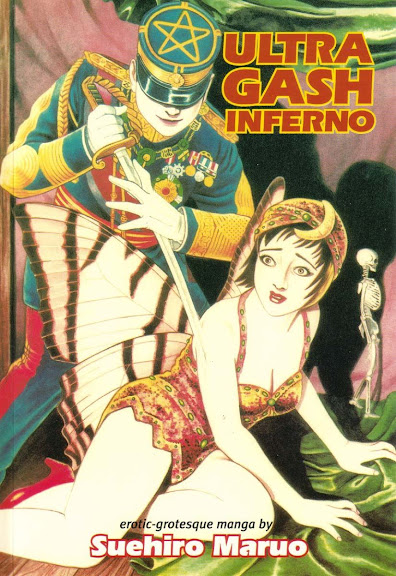
I've been lagging on my Suehiro Maruo posts, so for the next few weeks there's a chance that FTD might be inundated with buckets of ero-guro. If you get splattered, I apologize in advance.

From Richard J. Hand at M/C Journal:
Given that the new advances in technology in the 1980s had a major impact on the carefully constructed myth of authenticity in horror and pornography, ranging from flawless special effects at one extreme to the idea of the handheld voyeur movie at the other, it is rather ironic that the key progenitor to the erotic-grotesque form is a long-established and in some ways basic form: the pen and paper art of manga. This medium can be traced back to pillow books and the illustrated tradition in Japanese culture – a culture where even written language has evolved from drawings rather than alphabetical ciphers. Technological innovation notwithstanding, the 1980s is an extraordinary period for manga and it is perhaps here that we find the most startling hybridisation of porn and horror where, to borrow a phrase from Liz Kotz, “pathology meets pleasure, where what we most fear is what we most desire”. Many of the most extreme examples of 1980s manga repeatedly confront the reader with tales that intersperse and interlink imagery and narrative sequences of sex, violence and the abject.
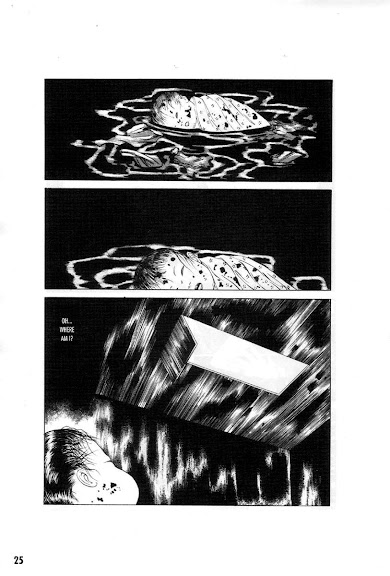
Suehiro Maruo is in many ways a commercially marginalised but highly renowned manga artist of the erotic-grotesque. His full-length manga novel Mr Arashi’s Amazing Freak Show (1984) is a sweeping tale of carnival freaks redolent with sex and sadism, but in this article I will address his short comic strips from around the same period. The stories collected in Suehiro Maruo’s Ultra-Gash Inferno (2001) present a mortifying vision of sex and horror with stories that draw on the erotically tinged world of classical Japanese theatre and the short fiction of Edogawa Rampo but push them into the domain of extreme pornography. In “Putrid Night” (1981), an abusive man, Todoroki, subjects his teenage wife, Sayoko, to vicious cunnilingus and anal sex. In one sequence, Sayoko gives oral sex while Todoroki runs a samurai sword across her cheek. In her misery, Sayoko finds true love in the teenage boy Michio. Their illicit sexual love is tender and fulfilling and yet the imagery that intersperses it is ominous: when they have sex in a field, their conjoined bodies are juxtaposed with rotting fruit infested with ants and Michio’s erect penis is juxtaposed with a serpent in the grass. Sayoko and Michio plot to murder Todoroki. The result is disastrous, with Todoroki cutting off the arms of his wife and her lover through the elbows, and lancing their eyeballs. In the carnage, Todoroki has sex with Sayoko. The young lovers do not die, and Todoroki keeps them alive in a cell as “pets” . In a grotesque triumph of true love, Todoroki, to his horror, spies on his two victims and sees them, their eye sockets and arm stumps pouring blood, tenderly making love.
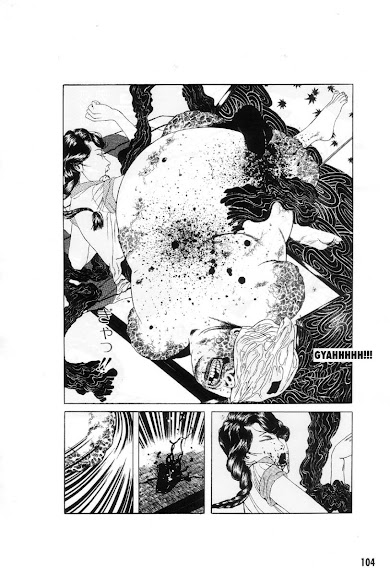
In “Shit Soup” (1982), Maruo produces a comic strip with no story as such and is therefore a highly simplistic pornographic narrative. We witness a menage a trois with a young woman and her two male lovers and the comic presents their various exploits. In their opening bout, the woman squeezes a cow’s eyeball into her vagina and one man sucks it out of her while the other licks her beneath the eyelid. Later, the three excrete onto dinner plates and dine upon their mixed shit. The story ends with the three laughing deliriously as they fall from a cliff, an emblem of their joyful abandon and the intersection of love and death. As epilogue, Maruo describes the taste of excrement and invites us to taste our own. This ending is an ingenious narrative decision, as it turns on the reader and strives to deny us – the viewer/voyeur – any comfortable distance: we are invited, as it were, to eat shit literally and if we refuse, we can eat shit metaphorically. Suehiro Maruo’s work can also be subtle: in what looks like a realistic image at the opening of “A Season in Hell” (1981), a dead teenage girl lies, covered in “gore and faeces”, on a grassy path which resembles the hairy opening to female sexual organs. The surrounding field is like a pudenda and the double arch of the nearby bridge resembles breasts. Maruo can thus outwit the censorship tradition in which pubic hair is generally forbidden (it does appear in some of Maruo’s comic strips), although erections, ejaculations and hairless openings and organs would seem to be always graphically permissible.

Probably the most excessive vision in Ultra-Gash Inferno is “The Great Masturbator” (1982). In this, Suehiro Maruo presents a family in which the father repeatedly dresses his daughter up as a schoolgirl in order to rape her, even cutting a vagina-sized hole into her abdomen. Eventually, he slices her with numerous openings so that he can penetrate her with his fists as well as his penis. Meanwhile, her brother embarks on an incestuous relationship with his ancient aunt. After her death, he acquires her false teeth and uses them to masturbate. He ejaculates onto her grave, splitting his head open on the tombstone. The excess and debauchery make it a shocking tale, a kind of violent manga reworking of Robert Crumb’s cartoon “The family that lays together, stays together” from Snatch 2 (January 1969). Like Crumb, we could argue that Maruo employs explicit sexual imagery and an ethos of sexual taboo with the same purpose of transgressing and provoking the jargon of particular social norms.
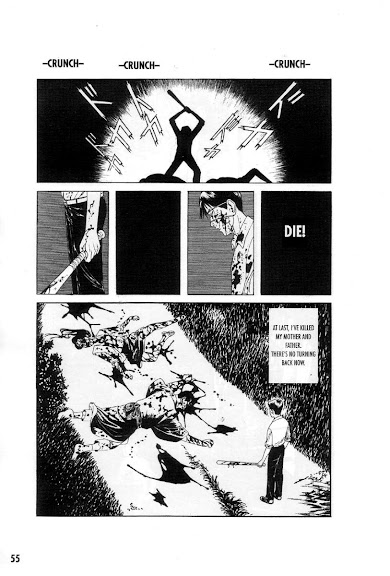
The political dimension to Maruo’s work finds its most blatant treatment in “Planet of the Jap” (1985), anthologised in Comics Underground Japan (1996). This manga strip is a devastating historical-political work presented as a history lesson in which Japan won the Second World War, having dropped atomic bombs on Los Angeles and San Francisco. The comic is full of startling iconic imagery such as the Japanese flag being hoisted over the shell-pocked Statue of Liberty and the public execution of General MacArthur. Of course, this being Maruo, there is a pornographic sequence. In a lengthy and graphic episode, an American mother is raped by Japanese soldiers while her son is murdered. As these horrors are committed, the lyrics of a patriotic song about present-day Japan, written by the Ministry of Education, form the textual narrative. Although the story could be seen as a comment on the subjection of Japan at the end of the Second World War – a sustained ironic inversion of history – it seems more likely to be a condemnation of the phase of Japanese history when, tragically, a minority of “atavistic, chauvinistic, racist warmongers” secured for themselves a position of “ideological legitimacy and power”. However, Maruo is being deliberately provocative to his contemporary reader: he writes this story in the mid-1980s, the peak of Japan’s post-war prosperity. As Joy Hendry says, Japan’s “tremendous economic success” in this period is not just important for Japan but marks an “important element of world history”. Maruo ends “Planet of the Jap” with a haunting international message: “Don’t be fooled. Japan is by no means a defeated nation. Japan is still the strongest country in the world”.
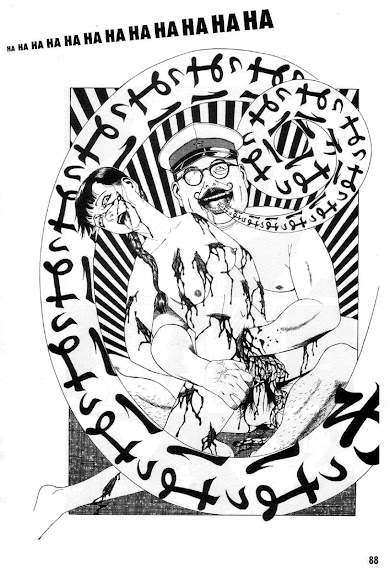
The porn-horror creator Suehiro Maruo follows in the tradition of figures like Octave Mirbeau, Georges Bataille and Robert Crumb who have used explicit pornography and sexual taboo as a forum for political provocation. The sexual horror of Maruo’s erotic-grotesque manga may terrify some readers and titillate others. It may even terrify and titillate at the same time in a disturbing fusion which has social and political implications: all the Maruo works in this essay were produced in the early to mid-1980s, the peak of Japanese economic success. They also coincide with the boom years of the Japanese sex industry, which Akira Suei argues was terminated by the repressive legislation of the New Amusement Business Control and Improvement Act of 1985. Suei’s account of the period paints one of frivolity and inventiveness embodied in the phenomenon of “no-panties coffee shops” and the numerous sex clubs which offered extraordinary “role-playing opportunities”. The mood is one of triumph for the sexual expression of the customers but also for the extremely well-paid sex workers. Maruo’s stories contemporaneous with this have their own freedom of sexual expression, creating a vision where sexually explicit images comment upon a wide variety of subjects, from the family, scatological taboos, through to national history and Japan’s economic success. At the same time as presenting explicit sex as a feature in his films, Maruo always closely weaves it in with the taboo of death. Martin Heidegger interprets human existence as Sein-zum-Tode (being-towards-death): in Maruo’s vision, existence is evidently one of sexual-being-towards-death. Like Suehiro Maruo’s hideously maimed and blind lovers, humanity always returns to the impulse of its sexuality and the desire/will to orgasm: what Maruo calls “the cosmic gash” of physical love, a gash which also reveals, in a Heideggerian sense, the non-being that is the only certainty of existence. And we should remember that even when love is blind, someone will always be watching.
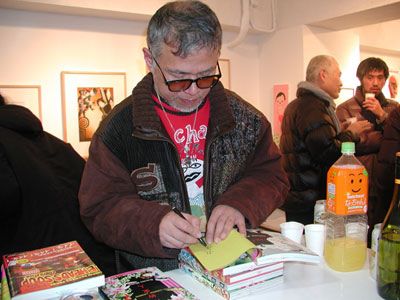
Ultra-Gash Inferno Megaupload Link


